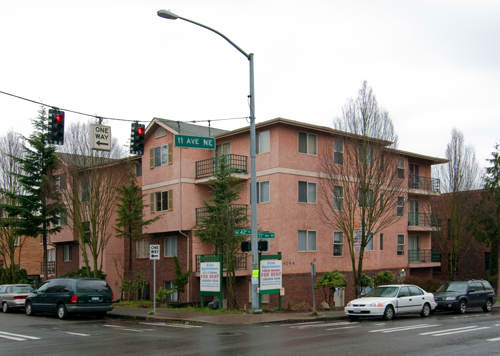
It was a frequently used phrase by one of our professors back in school. What he meant by it was this; as architects and designers we’ll always be liable for everything except aesthetics. City planners will evaluate a project’s zoning and height restrictions. Building officials will scrutinize the structural and life-safety design. Inspectors will analyze the electrical, plumbing and mechanical systems. Health inspectors will scour over the food service requirements. From the sidewalk curb down to the energy efficiency of each and every window, there are codes to meet and agencies to satisfy. As a professional, you can be held liable for a daunting number of issues. How the building looks, however, is not one of them.

There is a powerful undercurrent to all of this. Since there aren’t any state or city agencies enforcing good aesthetics on designers, it is precisely the designers that become the guardians of aesthetics. No one is going to make us architects uphold a visual code, it’s up to us.
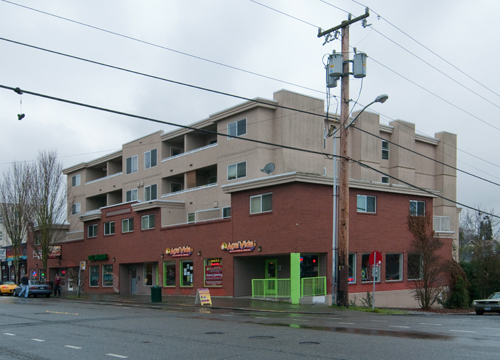
We appreciate the freedom from regulation of aesthetics and would find it awkward if an agency were enforcing codes in the realm of aesthetics. At the same time, the abundance of aesthetically negligent buildings in the built-environment is alarming, cover your children’s eyes so they don’t see it, threat level orange alarming.
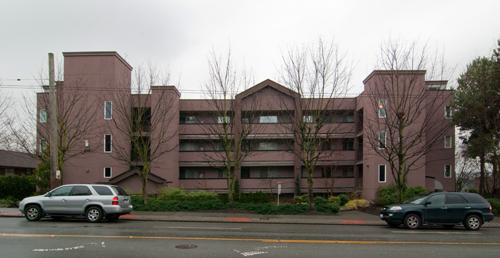
Team BUILD recently went on a neighborhood walk-about and began documenting buildings that, in our opinion, are aesthetically negligent. As it turns out, there are key ingredients to the recipe of aesthetic negligence. Topping the list is the complete lack of any driving idea or concept. A close second is having no relationship to time (like the present one) or region (like the northwest).

Following close behind is the architectural movement known as “a mixture of various globbed on styles from bygone eras and distant places”. The inclusion of roofettes is high on our list as is stucco, which always seems to have a starring role in these buildings.
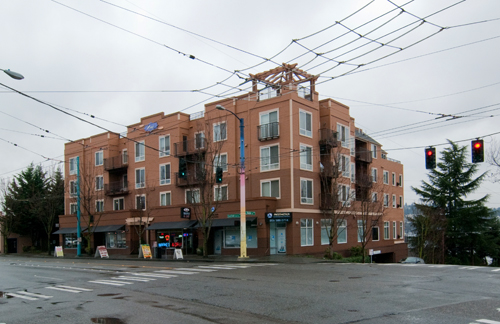
When these buildings actually include outdoor space they are peel-n-stick decks, jimmy-rigged to the outside. Even at the ground floor the connection to the sidewalk is vacant and the contribution to the street life is non-existent.

Most disturbing about these buildings is that, behind each and every one, is a licensed architect who at one point or another approved the drawings and stamped the permit set. Every one of these buildings was drawn up in elevation, unrolled on a professional architect’s desk and at some point they must have thought to themselves “yep, it’s finished, time to take this baby in for permit”. Dumbfounding.

In order to obtain a license in architecture, a minimum of 5 years of college level work is required at an accredited school of architecture. An additional 3 years of professional training is required under the supervision of a licensed architect. A nine part exam must then be passed prior to licensure. With all of the checks and balances along the way, it’s amazing that work this terrible is making it through the system. But contrary to rational thought, these buildings are flourishing, they’re popping up like weeds.
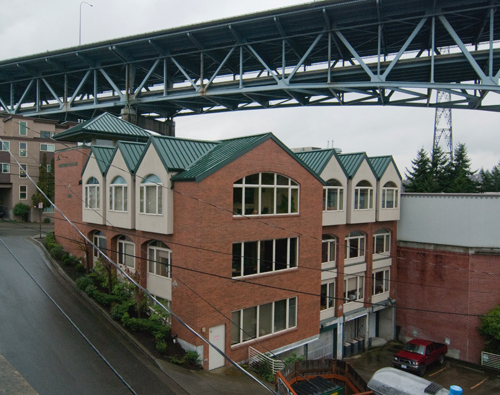
Our professor was right, you’ll never get sued for ugly. The evidence is everywhere and it would appear that the profession of architecture can no longer depend on it’s own process to ensure good design. As the guardians of aesthetics, if we fail to maintain a decent level of design in the built-environment, the freedom of design will gradually be taken over by review boards and covenants. Architects will lose the very authority that attracted most of us to design in the first place.
